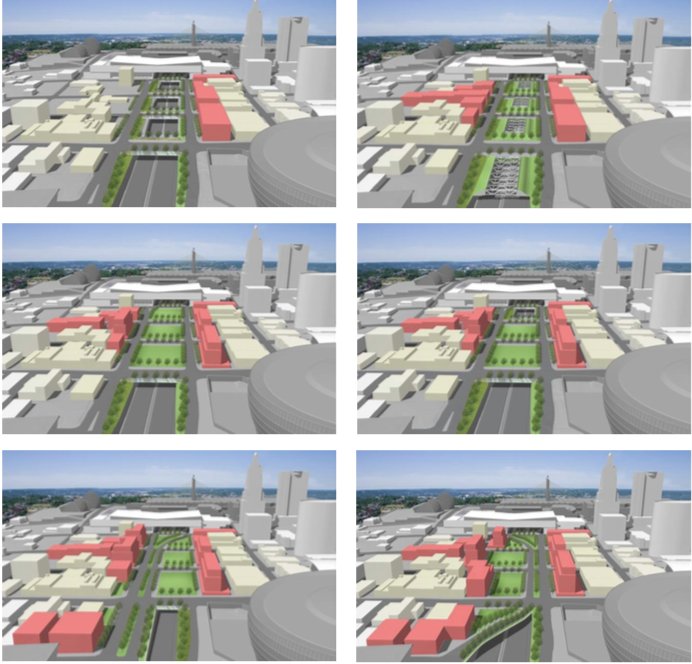Dream of Reconnecting Downtown to Crossroads with Park Over South Loop Costs Much Less

Published March 5th, 2018 at 1:15 PM
By Kevin Collison
A longtime dream to reconnect downtown with the Crossroads by decking the 1960s era South Loop trench may be closer to reality under a new plan that slices more than $60 million from earlier cost estimates.
The study done by HNTB at the request of the Downtown Council and partly funded by the Cordish Co. estimated a four-block stretch of Interstate 670, aka the South Loop, from Wyandotte to Grand could be decked and landscaped as a park for about $139 million.
That’s considerably less than the $200 million-plus price tag applied to earlier decking schemes.
“The big difference in the new concept is we’d leave Truman Road in its original alignment which reduces the roadway relocation costs,” said Chris Handzel, a senior landscape architect at HNTB.
“The strategy has been to reduce overall costs to make it more palatable.”
The other significant savings comes from reducing the cost of ventilation and life-safety requirements by limiting the stretch of the South Loop running beneath the deck to 800 feet.
“That reduces the hidden infrastructure costs,” Handzel said.
Backers of the South Loop deck concept are looking to Dallas as an example of what they’d like to achieve here.

Klyde Warren Park was built over a downtown freeway in Dallas. (HNTB)
In 2012, that city completed building a three-block park above a stretch of the Woodall Rogers Freeway that separated the Uptown neighborhood from downtown Dallas. The project cost about $110 million with the cost split evenly between public and private funding sources.
James Burnett, the Dallas designer of the five-acre Klyde Warren Park, helped prepare the HNTB study.
The other partner in the South Loop decking study was HR&A Advisors. That firm estimated a park above the South Loop would generate a $490 million economic impact.
Cordish and other property owners adjoining the South Loop have contributed to the South Loop decking study, according to City Manager Troy Schulte. Cordish officials were not available for comment.
Building a park above South Loop would be a huge amenity for the apartment towers either completed or planned by Cordish as well as other downtown residents and visitors.
The newly-completed Two Light and the proposed Three and Four Lights face the freeway. A deck would not only eliminate traffic noise, but offer recreational opportunities for residents.

A park above the South Loop would directly front apartment towers being developed by the Cordish Co. (HNTB)
Decking 670 also would help connect the new Loews Kansas City Convention Hotel to downtown and the Power & Light District.
“When you look at large projects being talked about…decking the highway and creating a seamless connection makes immediate sense,” said Jonathan Tisch, chairman and CEO of Loews Hotels.
Handzel said the South Loop deck study was prepared to help make the case for federal, state and city funding assistance.
For now however, it’s taking a backseat to another major downtown infrastructure project, replacing the aging Buck O’Neil bridge with a new $200 million span that would directly connect Interstate 35 with U.S. 169.
As with Dallas, a South Loop deck and park project also would seek substantial private financial support, but Handzel observed there’s “a lot more private dollars there than here.”
Next steps include further discussions with the Missouri Department of Transportation, which will need to replace the Baltimore and Walnut bridges over I-670 in the near future because they are reaching the end of their useful life.
If funding can be lined up, the project itself would take two- to three years to complete. Handzel said it would require “minimal disruption” to I-670 traffic because the structures supporting the deck would be built behind the existing retaining wall.

A layout of a potential park above the South Loop. (HNTB)

The proposed deck would cover a stretch of the South Loop from Wyandotte to Grand. (HNTB)

An economic impact study estimated decking the South Loop would have an almost half-billion dollar economic impact. (HR&A Advisors)

Previous South Loop decking plans have carried $200 million plus cost estimates. (HNTB)


